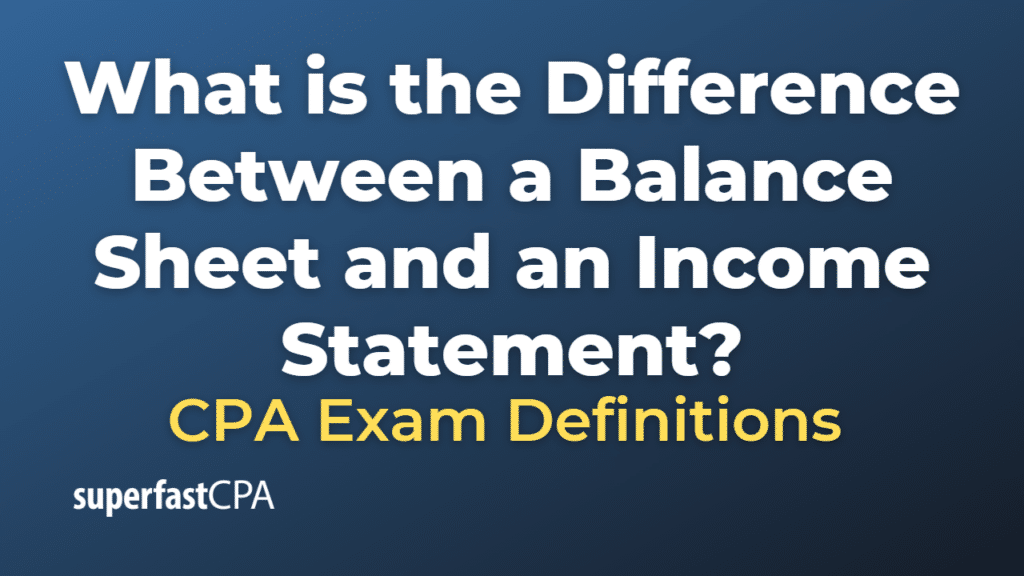Difference Between a Balance Sheet and an Income Statement
The balance sheet and the income statement are two of the main financial statements used by businesses, investors, and creditors to evaluate a company’s financial status and performance. They serve different purposes and offer different types of financial information.
- Balance Sheet: Also known as the statement of financial position, the balance sheet provides a snapshot of a company’s financial condition at a specific point in time. It lists the company’s total assets, liabilities, and shareholders’ equity. The basic accounting equation, Assets = Liabilities + Shareholders’ Equity, forms the basis for the balance sheet. Assets are resources controlled by the company, liabilities represent obligations the company must fulfill, and shareholders’ equity represents the net assets of the company (assets minus liabilities) and is the residual interest in the assets of the entity after deducting liabilities.
- Income Statement: Also known as the profit and loss statement (P&L) or the statement of earnings, the income statement shows a company’s revenue and expenses over a specific period of time, typically a quarter or a year. It provides information about a company’s profitability and its ability to generate profits by increasing revenue, reducing costs, or both. The bottom line of the income statement is net income or net loss, which is calculated by subtracting total expenses from total revenue.
In summary, while the balance sheet provides a snapshot of a company’s financial position at a specific point in time, the income statement shows how the company performed over a period of time in terms of its revenues, expenses, and profits or losses.
Example of the Difference Between a Balance Sheet and an Income Statement
Let’s use an example of a hypothetical company, “BakeItUp Ltd.”, to illustrate what a simplified balance sheet and income statement might look like.
Balance Sheet of BakeItUp Ltd. as of December 31, 2023:
Assets:
- Cash: $15,000
- Inventory (baking supplies): $10,000
- Property, Plant, and Equipment (baking equipment, store furniture, etc.): $75,000
Total Assets = $100,000
Liabilities:
- Accounts Payable (amounts owed to suppliers): $7,000
- Loan Payable (amount owed to the bank): $20,000
Total Liabilities = $27,000
Shareholders’ Equity:
- Common Stock: $50,000
- Retained Earnings (profits that have been reinvested in the business): $23,000
Total Shareholders’ Equity = $73,000
So, in this example, you can see that Total Assets ($100,000) = Total Liabilities ($27,000) + Total Shareholders’ Equity ($73,000), as per the basic accounting equation.
Income Statement of BakeItUp Ltd. for the Year Ended December 31, 2023:
- Sales Revenue: $120,000
- Cost of Goods Sold: $40,000
Gross Profit = Sales Revenue – Cost of Goods Sold = $80,000
Operating Expenses:
- Salaries Expense: $30,000
- Rent Expense: $10,000
- Depreciation Expense: $5,000
Total Operating Expenses = $45,000
Operating Income (or EBIT – Earnings Before Interest and Taxes) = Gross Profit – Total
Operating Expenses = $35,000
- Interest Expense: $2,000
- Income Tax Expense: $8,000
Net Income = Operating Income – Interest Expense – Income Tax Expense = $25,000
In this income statement example, the company generated a net income of $25,000 for the year ended December 31, 2023. This figure could then be added to the Retained Earnings on the Balance Sheet for the next year if the company decides to reinvest this income back into the business instead of paying it out as dividends.













